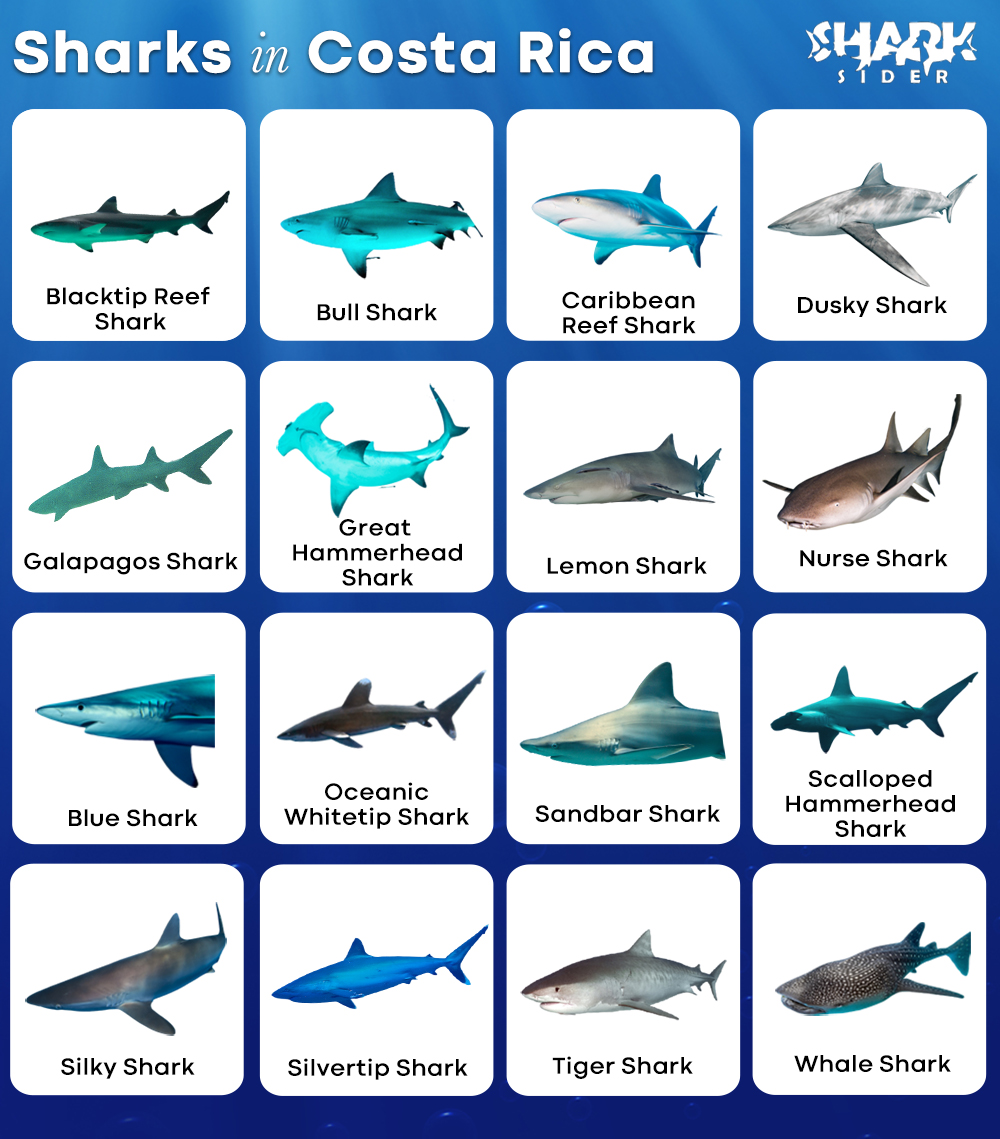Costa Rica is a tropical paradise home to a wide range of diverse marine species. This naturally includes several shark species as well.
However, if you plan to travel to Costa Rica, this shouldn’t be a deal breaker. Sharks generally ignore humans as they are not part of their usual diet. Most bites occur due to mistaken identity, i.e., the shark mistakes the silhouette of a human on a surfboard for a seal when looking up.
Though the chances are low, if an aggressive species like a bull or tiger shark has been seen around a specific beach or reef, it would be best to avoid the area for a while.
Table of Contents
hide
List of the Different Types of Sharks in Costa Rica
| Species | Maximum Size | Aggressiveness |
| Blacktip Reef Shark | 3-4 feet | Moderately aggressive (if provoked) |
| Blue Shark | 6-11 feet | Not aggressive |
| Bull Shark | 7-12 feet | Highly aggressive |
| Caribbean Reef Shark | 8-9 feet | Not aggressive |
| Cookiecutter Shark | 1.5-3.5 feet | Not aggressive |
| Dusky Shark | 9 -12 feet | Not aggressive (until provoked) |
| Galapagos Shark | 9.8-12 ft | Highly aggressive |
| Great Hammerhead Shark | 15-20 feet | Highly aggressive |
| Lemon Shark | 9-10 feet | Not aggressive |
| Nurse Shark | 7-8 feet | Not aggressive |
| Oceanic Whitetip Shark | 10-13 feet | Highly aggressive |
| Sandbar Shark | 5.5-8.5 feet | Not aggressive |
| Scalloped Hammerhead Shark | 9-12 feet | Moderately aggressive |
| Silky Shark | 7-10 feet | Highly aggressive |
| Silvertip Shark | 6.6-9.8 feet | Moderately aggressive |
| Tiger Shark | 10-14 feet | Highly aggressive |
| Whale Shark | 18-32 feet | Not aggressive |
| Whitetip Reef Shark | 3-5.5 feet | Moderately aggressive (only when provoked) |
Recent Cases of Shark Attacks in Costa Rica >>
FAQ
1. Have there been shark attacks in Costa Rica?
There have been only ten unprovoked shark attacks between 1900 and 2020, meaning these occur rarely. As per official records, the last known fatality was caused by a bull shark on 19th June 2011 in Guanacaste during a surfing incident.
2. Do great white sharks swim around Costa Rica?
Great white sharks are seldom seen in Costa Rica.
3. Are the sharks in Costa Rica endangered or on the verge of going extinct?
Several sharks, including two species of hammerhead, are critically endangered and might go extinct in about 20 years.
4. Can you go shark cage diving in Costa Rica?
Yes, these activities are arranged around Cocos Island in Costa Rica.
5. When is the best time to see whale sharks in Costa Rica?
Whale sharks feed on plankton, which blooms during the wet season. So, the best time for viewing whale sharks is between June and November.

